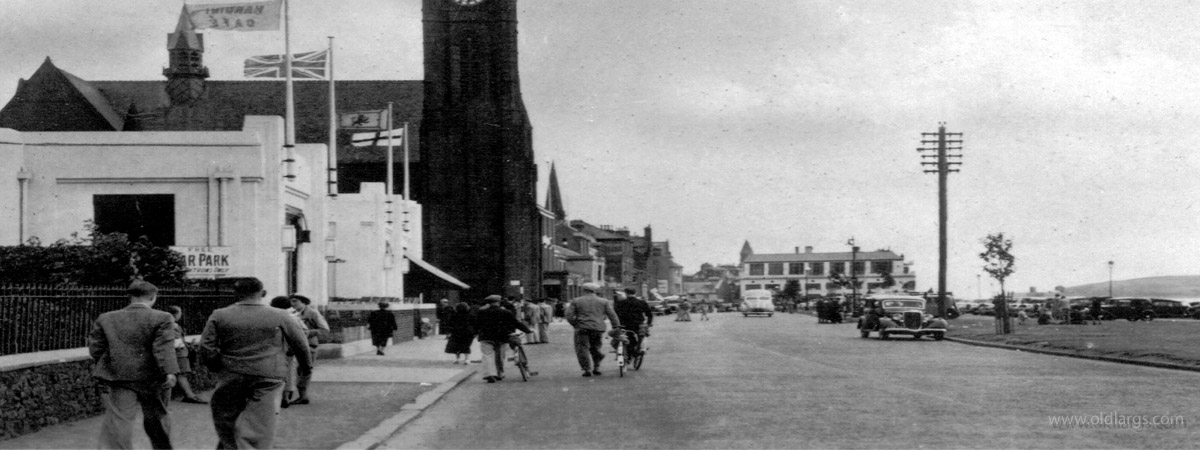
A walk along Greenock Road to Gallowgate Street
Hello Folks, Welcome to our first Old largs guided walk through Largs. This walk starts at Netherhall on Greenock Road and finishes at the end of Gallowgate Street. We hope to point out the history and background of many buildings and features that we will pass on our way. We hope you enjoy this and at the end you will know a wee bit more about Largs than you did before.But first let's get to Largs.
In 1820 the road from Skelmorlie was built along the shore to replace the more difficult red road from Netherhall to the Meigle.The Greenock road to largs was also known as the North Road and the Wemyss Bay Road in the past. The red road from Netherhall to the Meigle was built in 1824. Also in that year a start was made to improve the old Greenock Road up through Brisbane Glen. Between 1790 and 1840 the road over the moor to Kilbirnie was completed
Netherhall
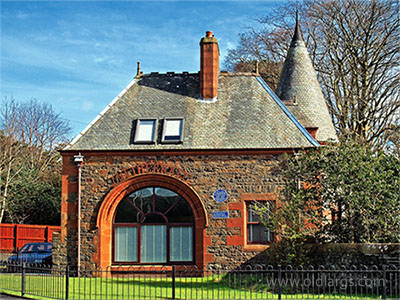
Lord Kelvin was a Belfast born leading scientist of the 19th century. He played a key role in laying the foundations of modern physics. The Kelvin temperature was his creation. It is one of the three best-known scales used to measure temperature, along with Fahrenheit and Celsius. He made his fortune as a scientific adviser in the laying of the Atlantic telegraph cables in 1857-1858 and 1865-1866.
Lord Kelvin's association with Largs initially started as a child on holiday visits and then a resident of over 50 years. He married his first wife Margaret Crum in 1852 who was the sister of Mrs Watson of Northfield and Miss Crum of Danefield.
He took up residence in Auchenames at the bottom of Nelson Street where Nardinis is located now while he built his mansion, Netherhall House, in 1874. Lord Kelvin installed Netherhall with electric lights powered by a gas generator which was away ahead of its time.
Lord Kelvin stayed at Netherhall regularly and was known in the town as Professor Thomson and then Sir William. He took an interest in the town helping local societies such as opening the flower shows. He would also give lectures to benefit local institutions sometimes in the Artillery Hall. In 1877 he gave a lecture and demonstration in Largs of the newly invented telephone thus creating the first ever telephone call from Largs. Lord Kelvin died at Netherhall on the 17th December 1907 at 10.15 in the evening.
The town of Kelvin, Arizona, is named in his honour. He was also honoured with his image printed on £20 note issued by the Clydesdale Bank in 1971.
It was intended that Lord Kelvin would be buried at the new cemetery at Haylie Brae but that was changed to an internment in Westminster Abbey. His coffin was taken from Netherhall to Largs Station on the evening of Saturday 21 December followed by an assembly of representative men of the town. Placed in a special stock van it was taken to Ardrossan and then Kilmarnock for the London Express.
Lord Kelvin’s coffin was then taken by hearse to Westminster Abbey where it rested overnight in St Faith’s Chapel. The following day the Abbey was crowded for the funeral. Lord Kelvin’s grave is in the nave, near the choir screen, and close to the graves of Isaac Newton and Charles Darwin. The pall-bearers included Darwin’s son, Sir George Darwin.
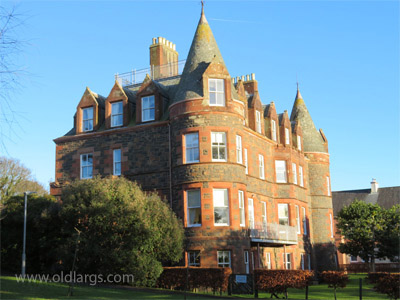
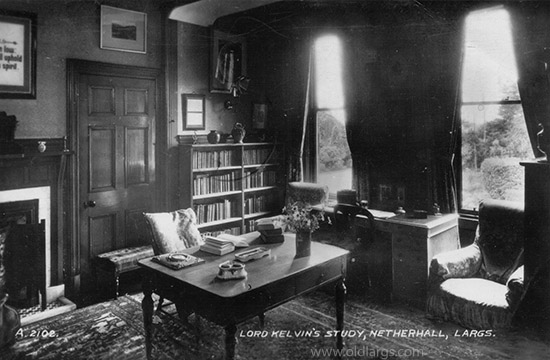
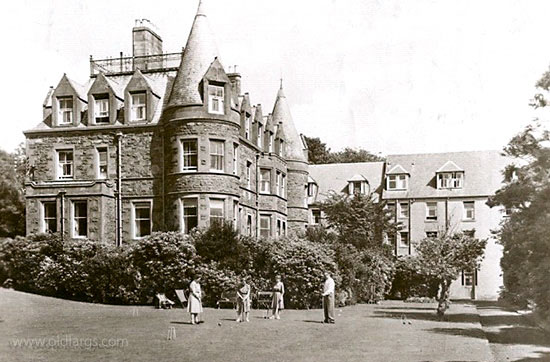
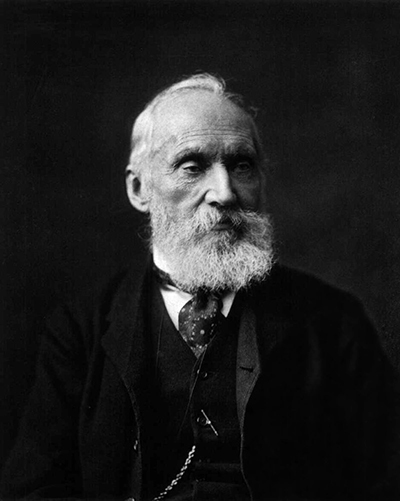
It was the project of a number of Scottish businessmen who had met in St Andrews in 1919 at a summer convention. By 1958 it was Scotland's largest Christian holiday centre with the addition of a new accomindation building to the left of the main house. This has since been demolished. By 1971 it was a Christian Guest House and Conference Centre
Eventually Netherhall was put up for sale in 1988 and bought by house builders Barratt and the contents were auctioned off in 1989. Barratt applied to develop the site for housing but the plans were rejected mostly because of opposition by neighbouring residents.
In February 1990 Barratt got planning permission from Cunninghame District Council to convert Netherhall House into seven flats and build 33 houses and 16 flats in the grounds and convert the coach house into three houses.
If you are ever out walking near Netherhall take a detour up and have a close look at the building. Walk around the back to the main entrance which is not often seen in photographs. It’s a very impressive building and even today you can get a feeling of the wealth that Lord Kelvin must have had to build a such home in this scale.
Noddleburn Bridge
As we leave Netherhall towards Largs we walk over the Noddleburn Bridge.First constructed 1736 on the Greenock Road over the Noddsdale Burn. Was widened in 1824 so it could be used by coaches. Modernised to its current form in 1977. It has two of the old bridge stones incorporated in the newer bridge on the North wall which read "Built in 1736", "Rebuilt 1824" and "Reconstructed 1977"
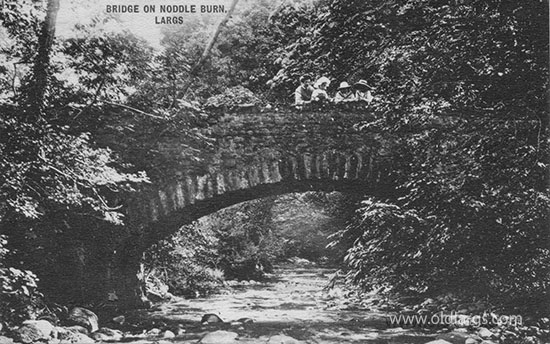
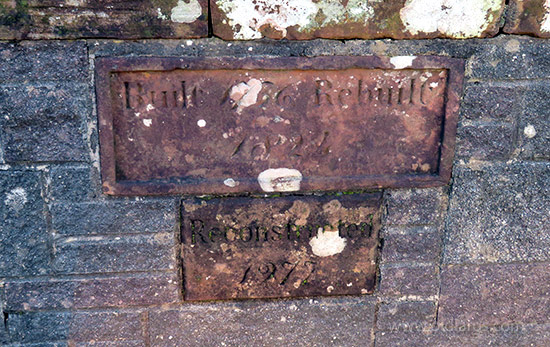
St Columba's Scottish Episcopal Church
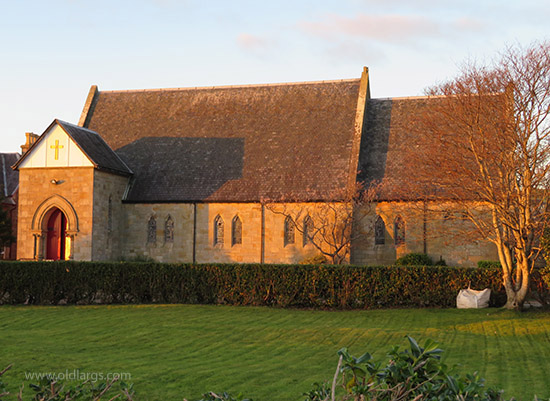
Prior to this church being built the congregation worshipped in the Columba Hall which stood on the site of the Sandringham flats.
Columba Hall started out life as a Relief church. In 1847 it joined and merged with other congregations and moved location and the hall became available to the Scottish Episcopal Church.
They continued to use the church until 1877 when their new church was built at Aubrey. The hall continued to be in use and doubled up as a place for public gatherings where dances and functions took place there. Eventually it was demolished to make way for the Sandringham flats.
Venduara Flats
Most visitors and locals walking past this little building will not know how much it played in one of the 20th century’s major world changing events.
The original names of the house was Tigh-na-Mara and owned by the Scottish artist Charles Lodder between 1820 and 1885. Then the name was changed to Fonne-a-Mara in 1910. It was also later known as St Catherine’s when it was owned by a Mr Mitchell a Glasgow publican who named the building after his daughter.
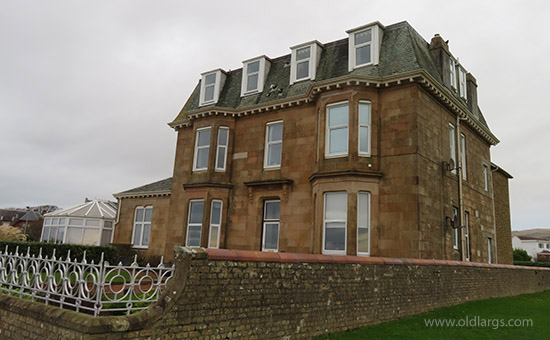
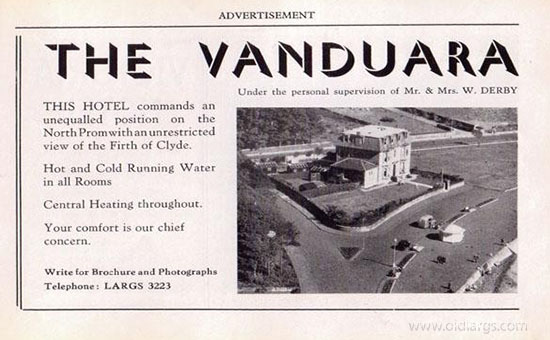
It eventually became the Vanduara Hotel and was owned by William and Annie Derby who had acquired it in 1934 and ran it as a Hotel until the late 1970s.
During the war the hotel was taken over by War Office and used as the headquarters for combined operations which planned the D-Day landings of Normandy. The building still looks very much the same as it did during the war. Much of the major planning for D Day actually took place in Vanduara itself but larger meetings were moved to the old (now demolished) Hollywood Hotel just down the road.
During this period the Derby's had to move out of their home but Mr Derby stayed to help and run the headquarters. He was given the rank of chief petty officer for his troubles. A new 27 line telephone exchange was installed which gave direct links to the Admiralty in London. Admiral Lord Louis Mountbatten the head of combined operations stayed at Venduara along with many of his senior staff.
See our Largs and the D-Day Landings feature for more details on this event.

